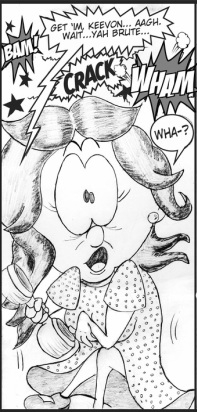
Confessions #1 - I didn’t plan to be a “Super Mom”. The thing is I love babies. I especially love bathing and dressing them, but I didn’t realize that babies grow into teenage-mutant-door-slamming-monsters or that I’d be raising a tribe of them on my own. Did I mention of have SIX of these monsters? Anyway, that’s what happened. And I guess I make it look easy because people call me “Super Mom”, which is really a pleasant euphemism for “the crazy woman with all those kids.”
Confessions #2 – Even after 20 years, I still haven’t perfected the art of sneaking out of bed without waking the little munchkins (aka monsters). Yes, one of them is usually in my bed. Most mornings start at dawn with me trying to ease out of bed to grab some coffee and workout before they wake up and start World War III. This is never successful. Usually, as I’m easing off the bed, my 7 year old (with her eyes closed) says, “I want coffee, too.” Then, I sigh and plod downstairs with her and Cat close behind. Cat is actually a cat. I call her Cat and my children call her Sister, but I’m sure I didn’t birth her.
Confession #3 – My morning workouts consist more of dancing than actually running on the treadmill. I realize that now because one of my mutant-teenage-monsters secretly videoed me doing just that. Once on the treadmill, iPhone blaring away, I constantly hop-straddle the side strips, gyrating to songs like Gal A Bubble. The coffee is kicking in by then, you see. That’s when my 18 year old daughter usually descends and gasps, “Oh GAWD Mom! Old people can’t dance like that.”
FYI: I’M OFFICIALLY 28 YEARS OLD, SO I CAN DANCE HOWEVER I WANT!
Whoa, lost it there for a bit.
Confession #4 – I’m NOT superhuman, so sometimes I lose it.
Anyway, after grumpy, big sister descends, a wave of teenagers rush downstairs - all screaming for coffee (they love coffee), for conditioner (I think they drink that too); one is screaming to get into the shower (they still love to bathe – yes, that’s my fault), one needs her clothes out of the dryer (they hate ironing); another needs the iron because the stupid dryer doesn’t iron clothes well enough, they all need lunch money, they need black socks; one needs me to write a note because there is NO WAY she is swimming in that disgusting pool, boy-twin needs a note because he’s too sick to do PE, and the 7 year old needs a note because I forgot to buy the stuff for her project. Again. Oops. Sorry, honey.
Eventually, they all gather at the front door. Good. They’re leaving. But first…they remind me to bring lunch money; I tell them what to cook for dinner; they moan and beg for pizza; the twins start choking each other; I scream at them to stop - they’re going to miss the bus; grumpy, big sister checks herself in the mirror again; I scream that she’s going to miss the bus; the girl-twin announces she’s colouring her curls a fiery red; the 7 year old declares she’s colouring her hair too; I scream that they’re all going to miss the bus; they crowd the treadmill to kiss me bye (which takes a while). And as they finally leave, grumpy, big sister yells over her shoulder, “Enjoy your dirty-dancing workout, Mom.” Rolls eyes. Slams door. Monster.
Confession #5 - I AM the crazy woman with all those kids.
Confessions #2 – Even after 20 years, I still haven’t perfected the art of sneaking out of bed without waking the little munchkins (aka monsters). Yes, one of them is usually in my bed. Most mornings start at dawn with me trying to ease out of bed to grab some coffee and workout before they wake up and start World War III. This is never successful. Usually, as I’m easing off the bed, my 7 year old (with her eyes closed) says, “I want coffee, too.” Then, I sigh and plod downstairs with her and Cat close behind. Cat is actually a cat. I call her Cat and my children call her Sister, but I’m sure I didn’t birth her.
Confession #3 – My morning workouts consist more of dancing than actually running on the treadmill. I realize that now because one of my mutant-teenage-monsters secretly videoed me doing just that. Once on the treadmill, iPhone blaring away, I constantly hop-straddle the side strips, gyrating to songs like Gal A Bubble. The coffee is kicking in by then, you see. That’s when my 18 year old daughter usually descends and gasps, “Oh GAWD Mom! Old people can’t dance like that.”
FYI: I’M OFFICIALLY 28 YEARS OLD, SO I CAN DANCE HOWEVER I WANT!
Whoa, lost it there for a bit.
Confession #4 – I’m NOT superhuman, so sometimes I lose it.
Anyway, after grumpy, big sister descends, a wave of teenagers rush downstairs - all screaming for coffee (they love coffee), for conditioner (I think they drink that too); one is screaming to get into the shower (they still love to bathe – yes, that’s my fault), one needs her clothes out of the dryer (they hate ironing); another needs the iron because the stupid dryer doesn’t iron clothes well enough, they all need lunch money, they need black socks; one needs me to write a note because there is NO WAY she is swimming in that disgusting pool, boy-twin needs a note because he’s too sick to do PE, and the 7 year old needs a note because I forgot to buy the stuff for her project. Again. Oops. Sorry, honey.
Eventually, they all gather at the front door. Good. They’re leaving. But first…they remind me to bring lunch money; I tell them what to cook for dinner; they moan and beg for pizza; the twins start choking each other; I scream at them to stop - they’re going to miss the bus; grumpy, big sister checks herself in the mirror again; I scream that she’s going to miss the bus; the girl-twin announces she’s colouring her curls a fiery red; the 7 year old declares she’s colouring her hair too; I scream that they’re all going to miss the bus; they crowd the treadmill to kiss me bye (which takes a while). And as they finally leave, grumpy, big sister yells over her shoulder, “Enjoy your dirty-dancing workout, Mom.” Rolls eyes. Slams door. Monster.
Confession #5 - I AM the crazy woman with all those kids.
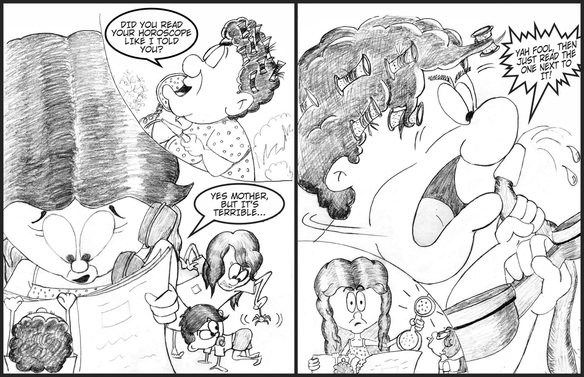

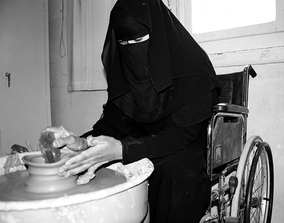
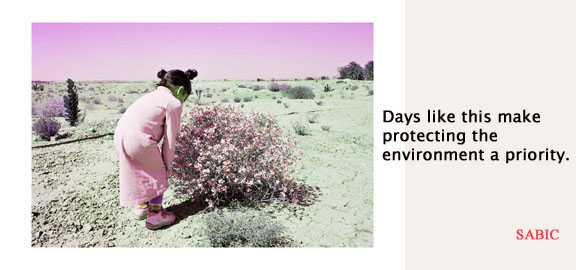

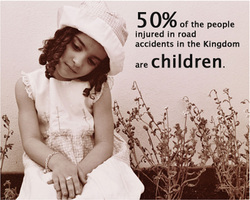

 RSS Feed
RSS Feed
